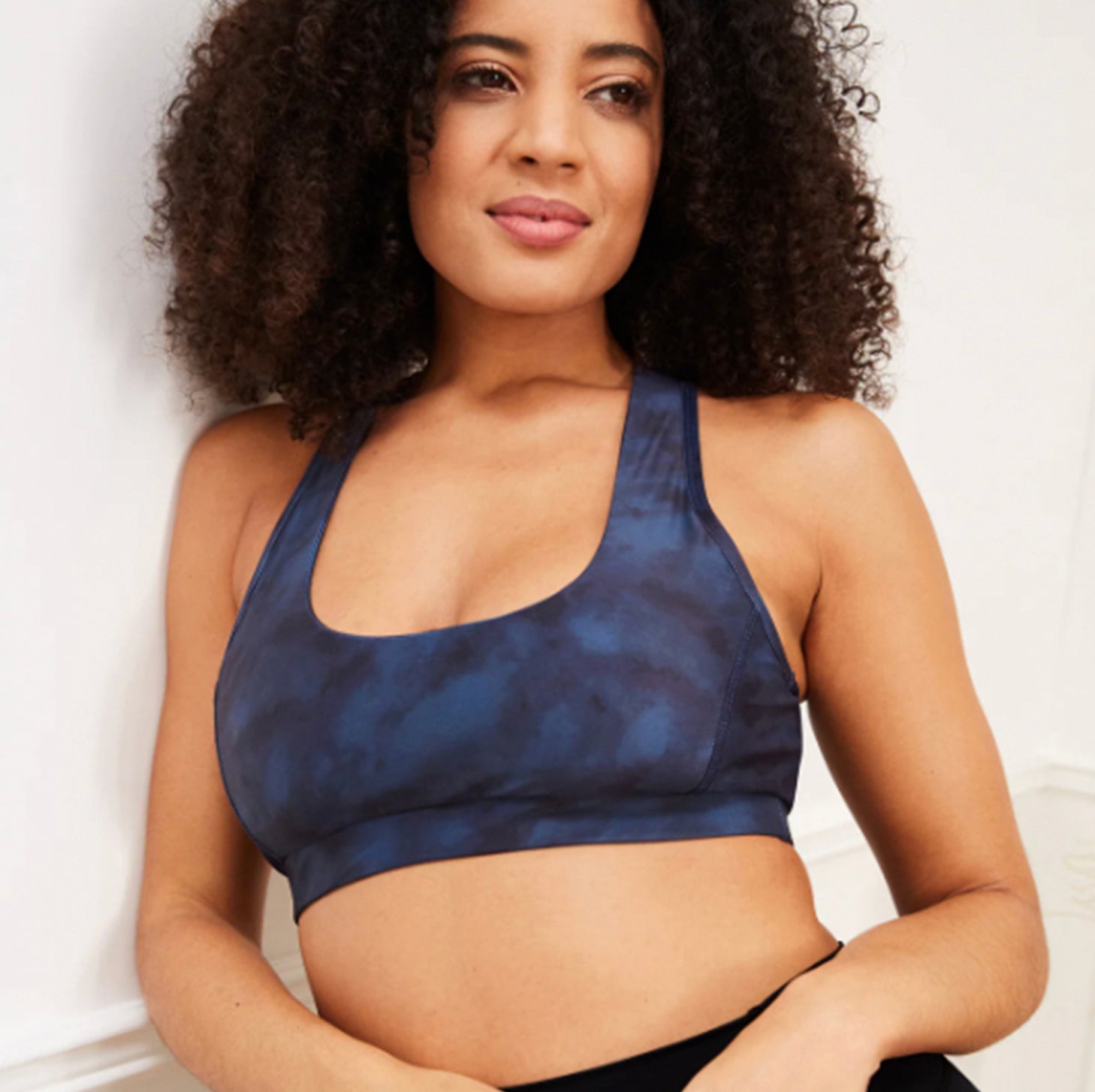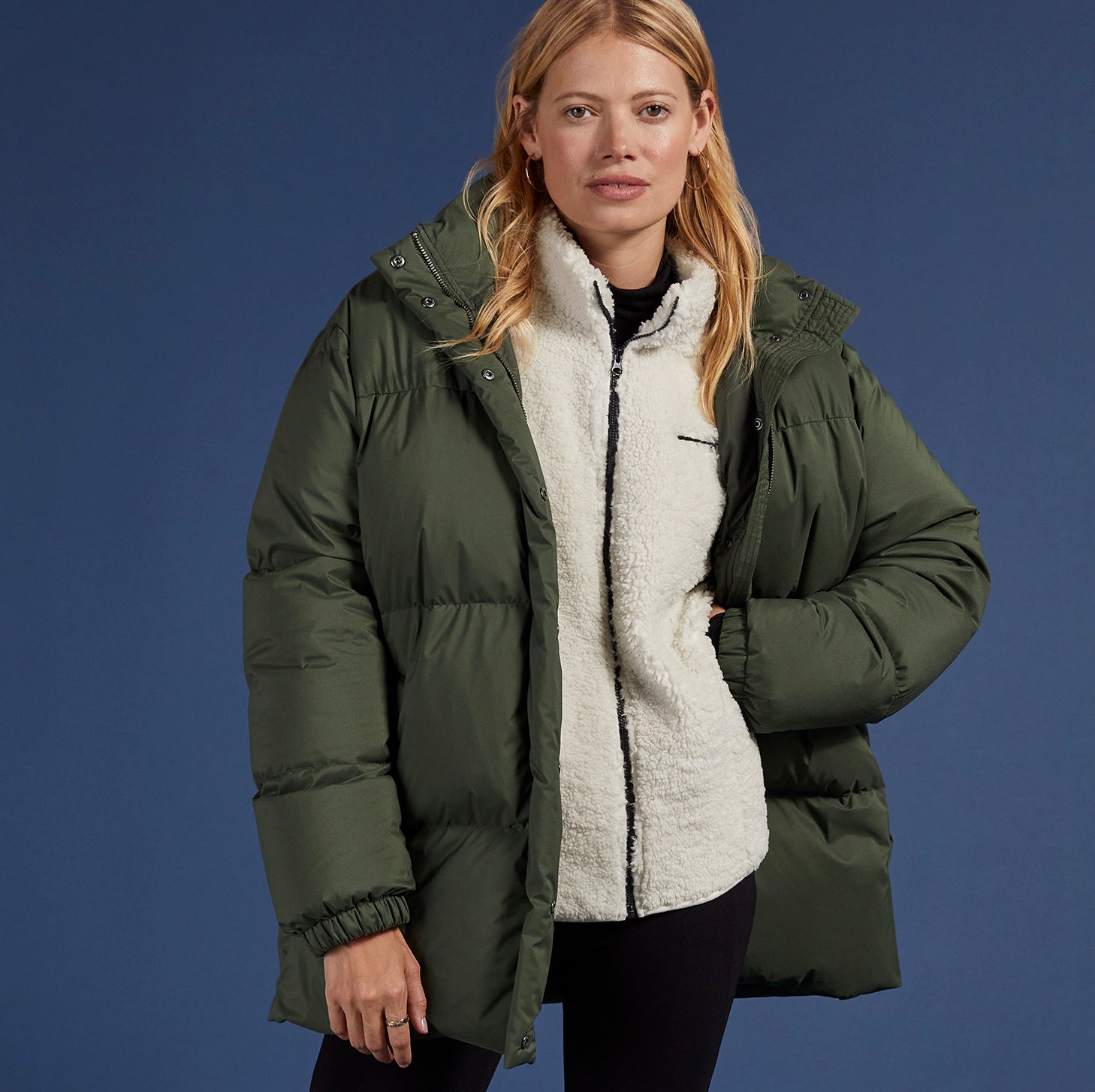
The following care advice is well-suited for majority of garments made from this material, but always refer to your Care Label instructions in case of doubt. Not sure how to read the symbols in your Care Label?
Check here
Caring for synthetics and synthetic blends is very simple but there are a few quick tips to help avoid any laundry disasters.
First and foremost, synthetics don’t do hot temperatures well, so you should always choose a colder setting on your washing machine but otherwise a standard wash will do. Cold washes are also better for the environment, so this is a win-win!
While the fashion industry is still trying to best understand microfibres including where they come from and what they do to the environment, we know that trying our best to reduce them is important. Synthetic clothing releases microplastics when washed and there are a few things you can do to reduce this.
Choosing the eco wash on your washing machine uses less water and investing in a mesh laundry bag or filter can collect microfibres to stop them being released into the environment. Additionally, choosing to wash your synthetic clothing in fuller loads and without heavier fabrics (like denim) reduces the amount that your clothing is knocking about, which should release fewer microfibres.

Fleece
Whether your fleece garments are synthetic, blends or made of natural fibres there are a few things to consider when caring for them.
If you can, separate your fleeced products out so the wash is all a similar weight and texture (but you should wash with other similar items if not to avoid wasting water and energy). You should also close all the zips to protect the teeth and turn your garments inside out to reduce pilling.
Any stains should be spot treated using a stain remover before the main wash, which should be a cold, gentle wash. Additionally, you should never use fabric softener on fleeces because it will actually do the opposite of what you might think and ruin the soft, fluffy texture.
Your fleece garments will stay fluffy if you leave them to air dry after washing but if you’re tight on time you can tumble dry your garments on no-heat. Try to avoid this as much as possible as tumble drying uses a lot of unnecessary energy, contributing to greenhouse gas emissions.

Sportswear
Hanging out – Skip the dryer and instead try hanging your clothes to dry. Dryers cause the fibres in clothes to break and are responsible for up to 90% of the energy used in laundry. Simply give your clothes a shake and then carefully hang them to dry, using the lateral seams as the folds to reduce wrinkling. Even in winter, you can dry clothes indoors. Knits will last considerably longer if they are always air dried. Linens and silks should be dried out of the sun to avoid discolouration
Freshen it up – If an item of clothing isn’t dirty per se but smells like it has been worn, you can freshen it up instead of washing it. Just hang it in the bathroom while you shower or use a steamer (the vapour will help release bacteria from the fibres and get rid of wrinkles)

Down and polyester filled outerwear
Before washing, use a fabric brush to remove as much loose dirt as possible before spot cleaning any stains using a stain remover bar or soap.
You’ll want to choose a cold, gentle cycle on your washing machine with an extra rinse cycle if possible. The extra rinse will help to remove all the detergent from the filling of your coat without excessive agitation. Your gentle cycle should already be low or no spin but if not, you might be able to choose this setting manually.
You should choose a down specific detergent or if you can’t find one, pick a wool and cashmere one. A gentle detergent like this shouldn’t damage the filling of your coat.
When the wash is done, gently squeeze the excess water from your coat and lay it flat on a table or ideally a clothes airer to drip dry for 24-48 hours (depending on the weather conditions). Avoid wringing your coat as this can damage the filling, leaving it flat, misshapen and lumpy.
Once the coat is mostly dry, we recommend tumble drying it on a low heat with dryer balls (or clean tennis balls) to fluff up and redistribute the filling. This will ensure that the coat fully dries, as moisture in the filling can stick around, causing mildew and bad smells.
Make sure to not store or wear your coat until it has fully dried and if you choose to store it away for the warmer months, pick somewhere dry and use a paper or cotton bag instead of plastic so it can breathe.
